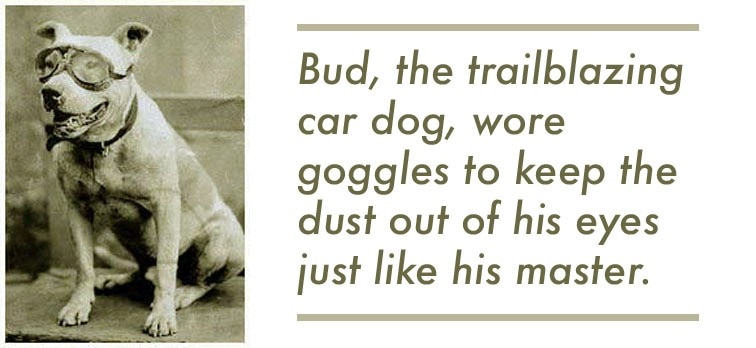Dogs in cars, the humans that drive them, and what we’re doing wrong
How to keep your furry friends safe


In modern times,
Riding in cars and trucks with our furry, four-legged friends has become so deeply ingrained in our culture that many auto manufacturers now cater to canines and their owners with marketing campaigns like Subaru’s
YOU MAY ALSO LIKE:
The 10 Best Cars for Teen Drivers, According to Science
5 Things Everyone Should Do When Selling a Car
Life Lessons From My First Car: The Story of Blue
IT’S NOT ALL CARE-FREE OPEN-ROAD COMPANIONSHIP, THOUGH
Great as it can be hitting the open road with your dog’s nose joyously protruding from an open window, leaving any passenger–canine or otherwise–free to roam about a moving vehicle is definitely not a good idea.
Should you crash, that happy-go-lucky goof can transform into a potential wrecking ball if he or she isn’t strapped in like everyone else.
More than half of all dog owners admit to petting their beloved companion while driving, according to an American Automobile Association (AAA) survey, and
Those drivers aren’t even breaking the law: while seatbelt use for humans is mandated across the country, foregoing pet restraint is largely legal,
“Restraining your pet when driving can not only help protect your pet, but you and other passengers in your vehicle as well,” Jennifer Huebner-Davidson, AAA National Traffic Safety Programs manager, said in a news release. “An unrestrained 10-pound dog in a crash at 50 mph will exert roughly 500 pounds of pressure, while an unrestrained 80-pound dog in a crash at only 30 mph will exert 2,400 pounds of pressure.”
THEY CRASH TEST FOR DOGS NOW
Fortunately, there are more ways than ever to protect your pooch/passenger
In the past decade, some manufacturers (Subaru and Volvo, among them) and organizations have even embarked on dog-specific crash testing.
The
(Don’t worry:
So far, a handful of harnesses, crates, and carriers – with cool names like The Rocketeer Pack and Sleepypod Atom–have been deemed worthy of certification. For the complete list, visit CenterForPetSafety.org. That’s where you can also learn about
Picking the Right Car Features For You and Your Dog
In addition to safety concerns, there are practical matters to consider if you like to travel with your dog(s). Here are just a few:
- Most SUVs and wagons can be fitted with rubber mats for their rear compartments, so muddy paws don’t destroy your vehicle and so Mr. Wiggles doesn’t slide all over the place.
Factory-installed pet barriers (like the Queen uses for her dogs) are becoming more common as well.
Just like with children, you should never leave a dog in the car if it’s even remotely warm outside. If you live somewhere hot, consider a vehicle that has air conditioning vents specifically for the rear seats. Many don’t.
Fabric seats are prone to staining and can collect fur like some people collect stamps. Leather (or vinyl) seats, while generally easier to clean, can be susceptible to scratches or even tears if your dog has sharp claws. But there is a kennel-full of fitted dog car seat covers on the market. They come in many shapes, sizes and materials.
If you have a big dog, that sporty two-seater is probably out of the question. Look for something with extra space. And if you have a small or older dog that needs to get into a truck or vehicle that sits higher off the ground, lightweight dog steps or foldable ramps are available.
Ultimately, there are numerous features in a car that matter just as much to your dog as they do to you or your children. Simply keeping the safety and comfort of your furry passenger in mind when you’re looking for your next vehicle will make for a smoother, more memorable journey.
Written by humans.
Edited by humans.
This site is for educational purposes only. The third parties listed are not affiliated with Capital One and are solely responsible for their products and services. All trademarks are the property of their respective owners. Capital One does not provide, endorse or guarantee any third-party product, service, information or recommendation listed above.
 Aaron Miller
Aaron MillerAs a veteran automotive journalist, I have been fortunate enough to drive some of the most desirable cars on the planet and get to know some of the most important people in the industry. Before joining Capital One, I served as the Cars Editor for a major national website, and covered industry news and analysis for well-known automotive-specific sites. I also wrote feature articles and reviews for niche enthusiast websites. I’ve been obsessed with cars since—literally—before I can remember, with my collection of die-cast and slot cars taking center stage during my formative years. Simply put, for me, working isn’t really “work.”
Related articles
View more related articles